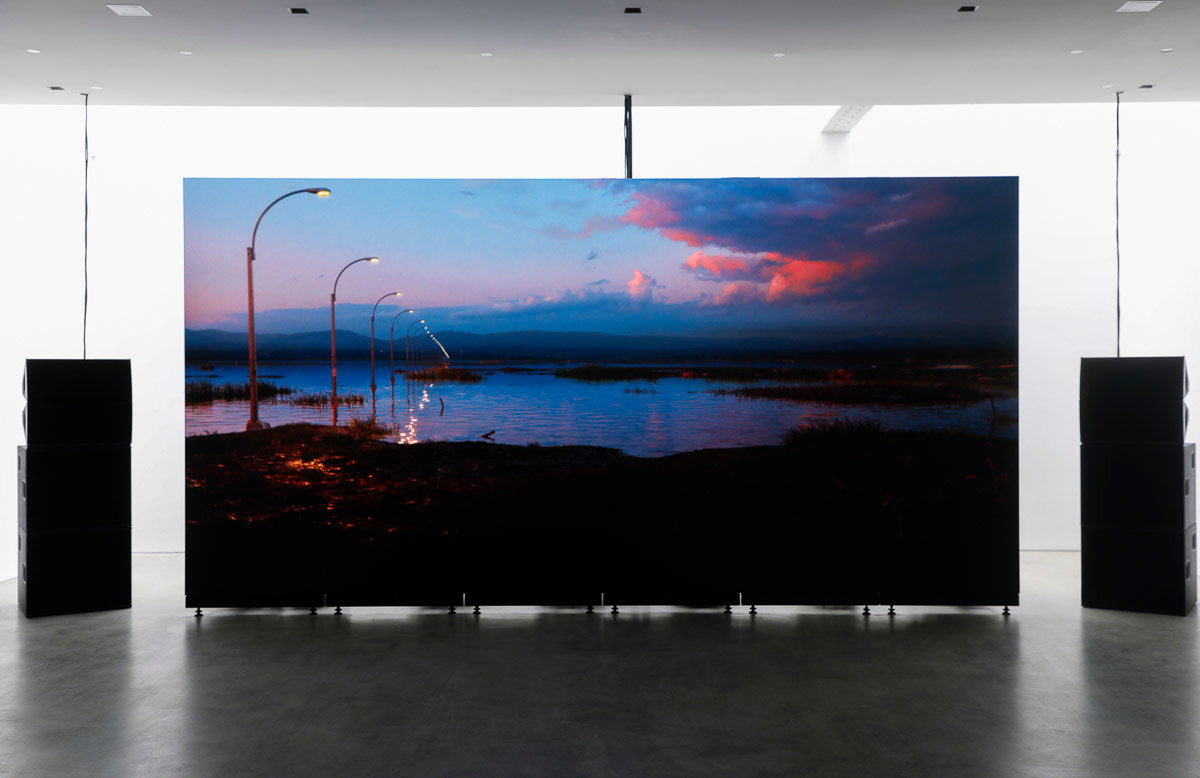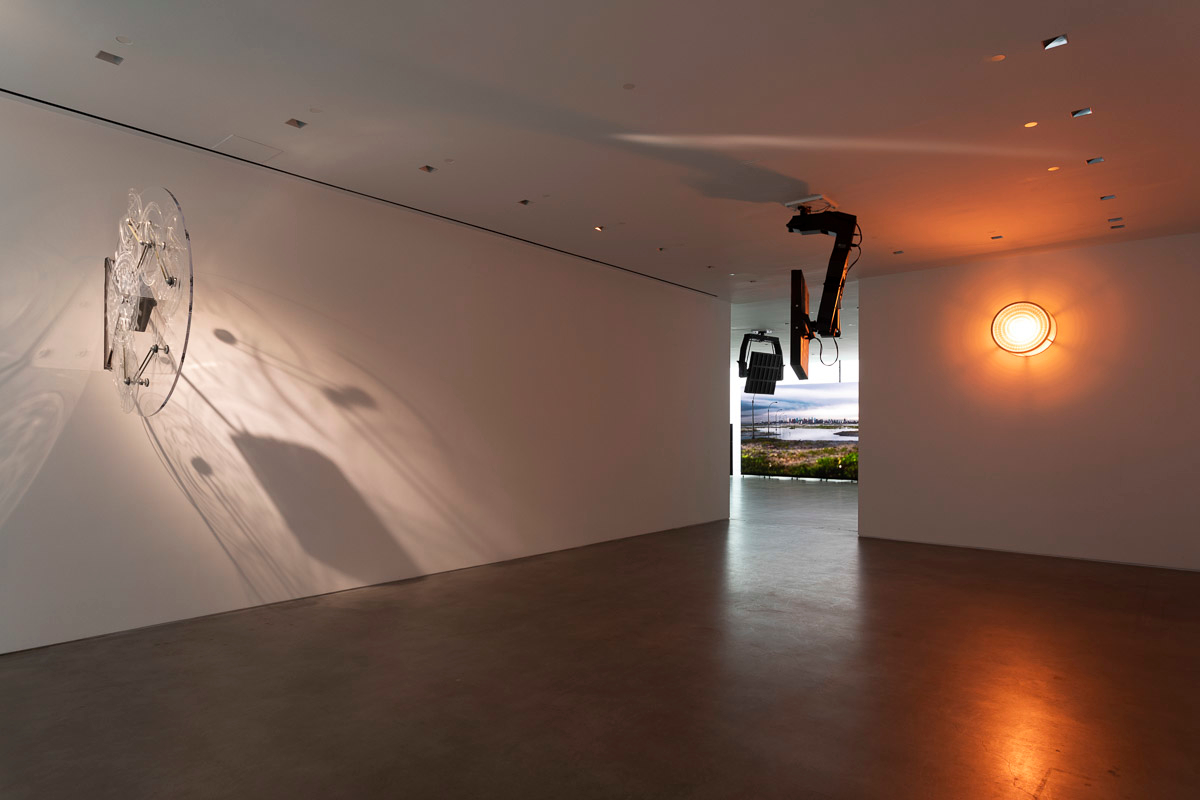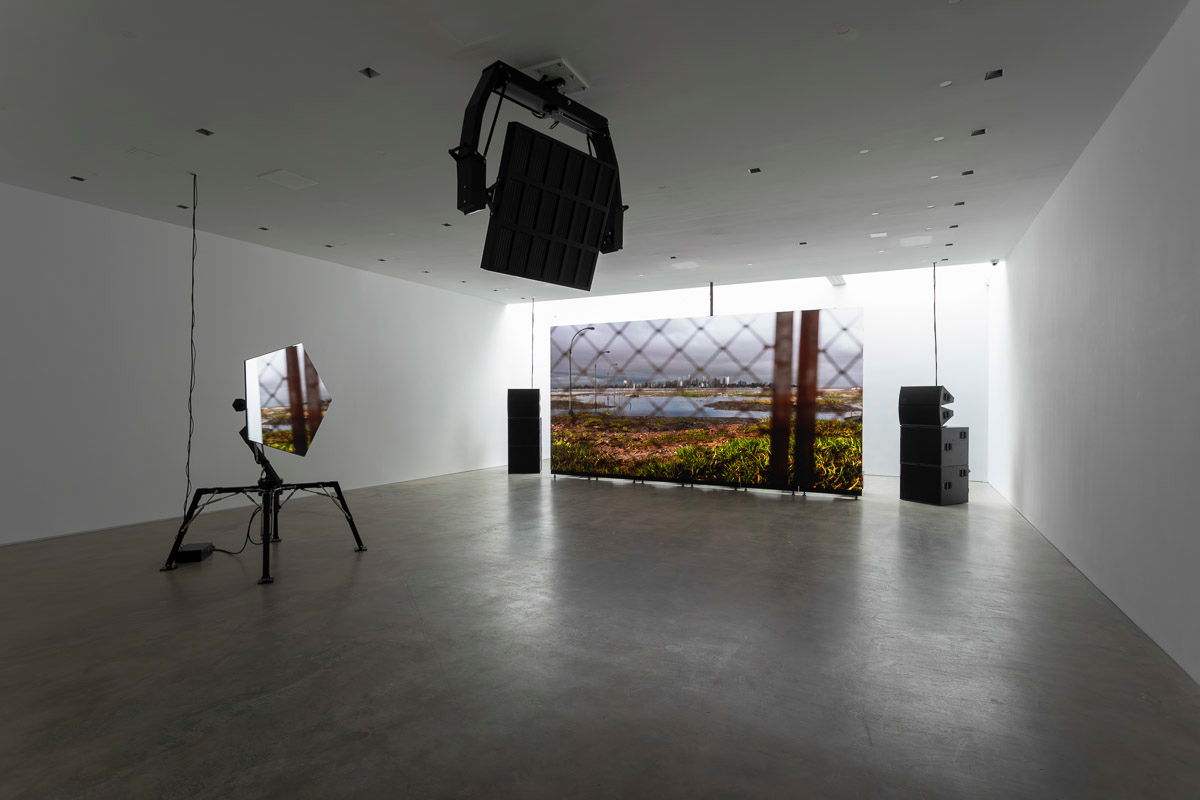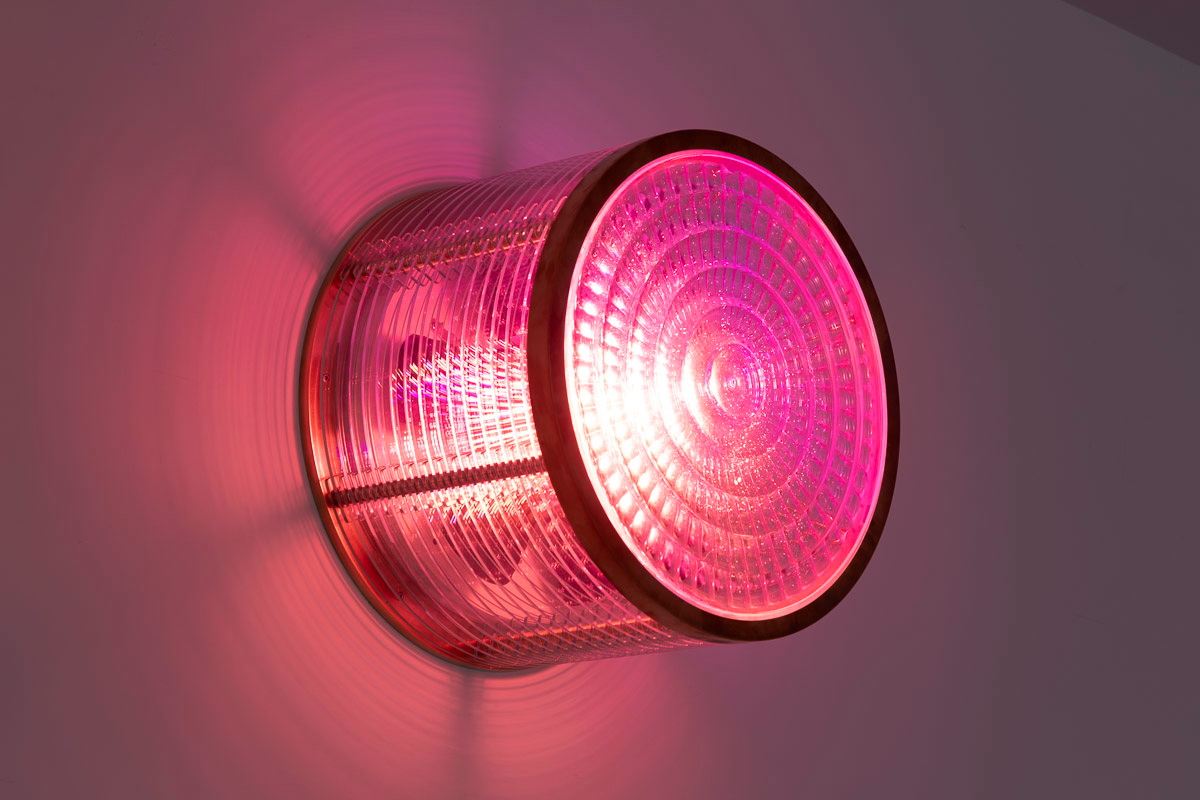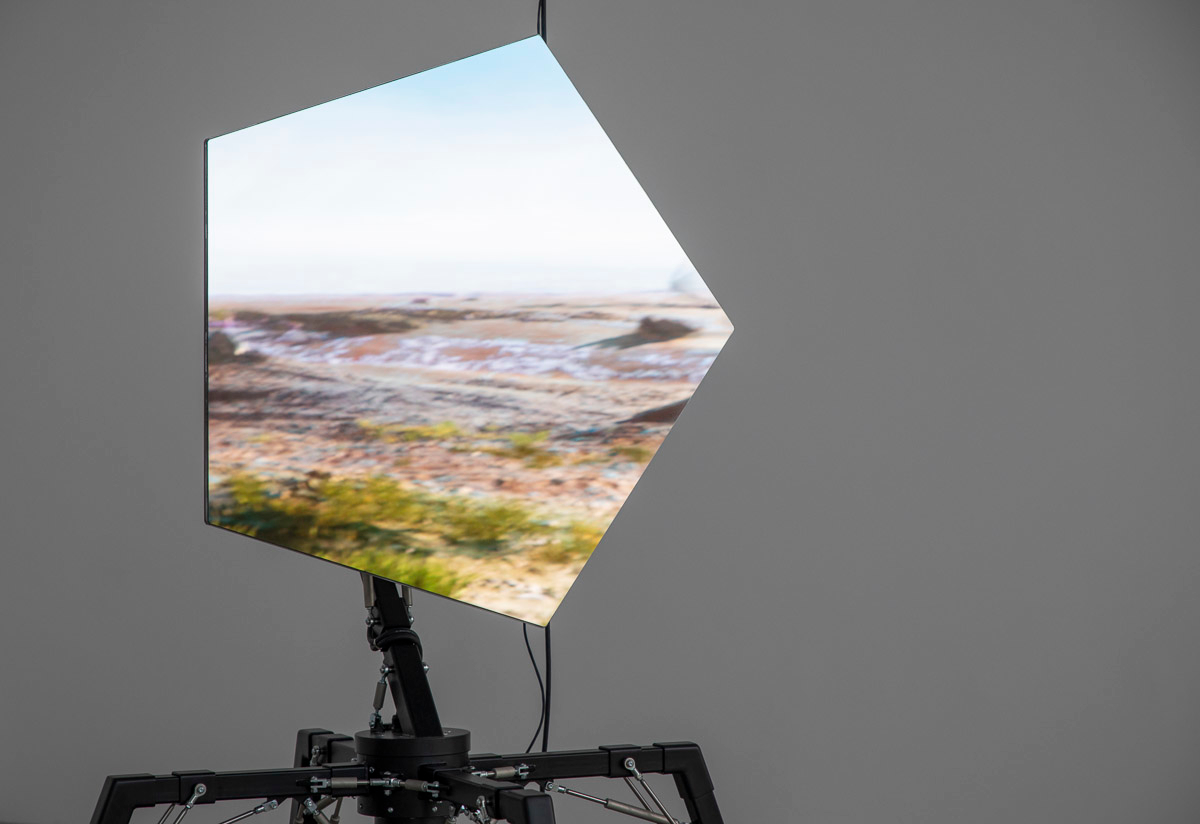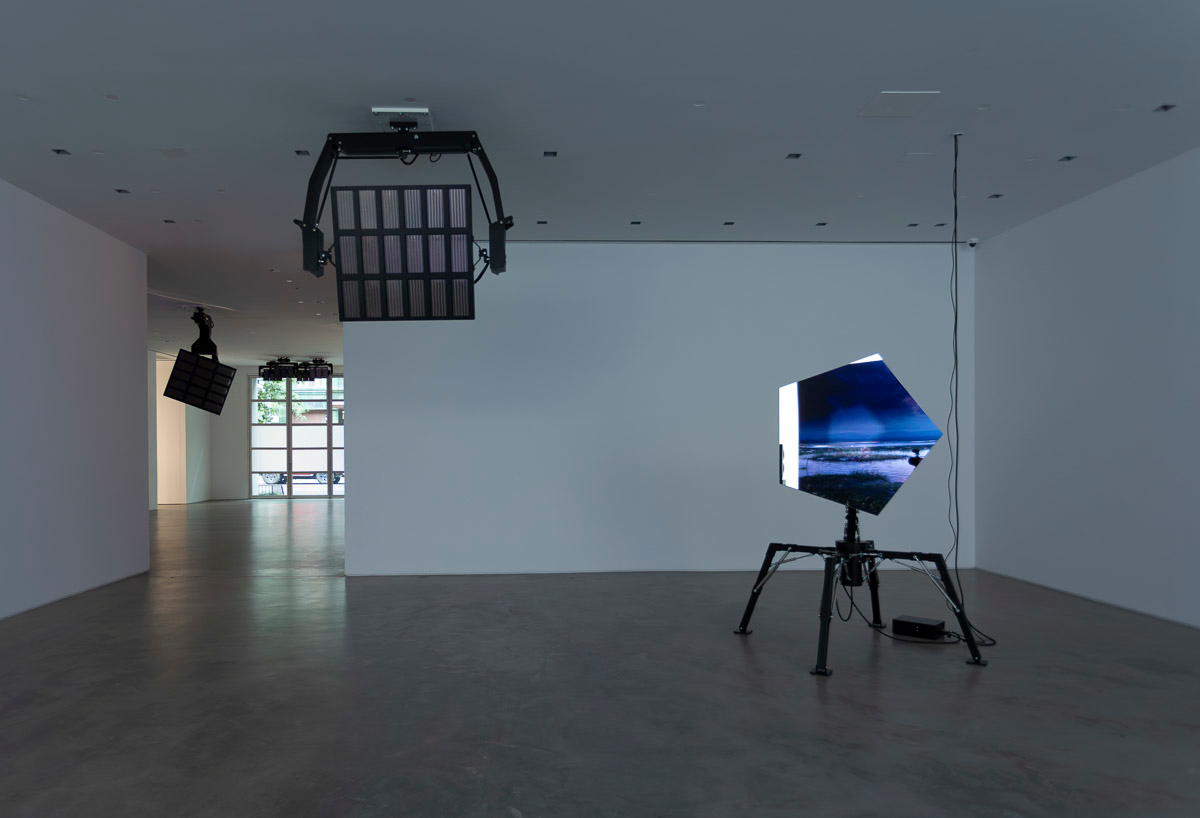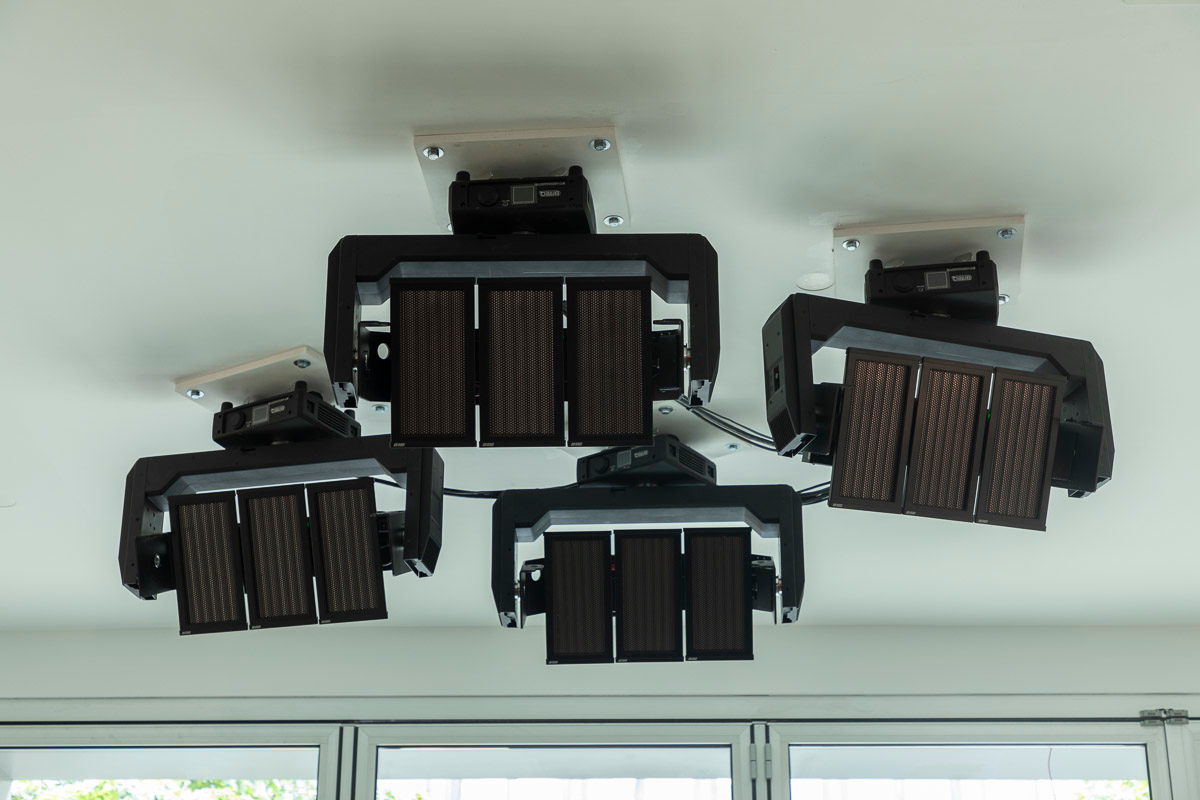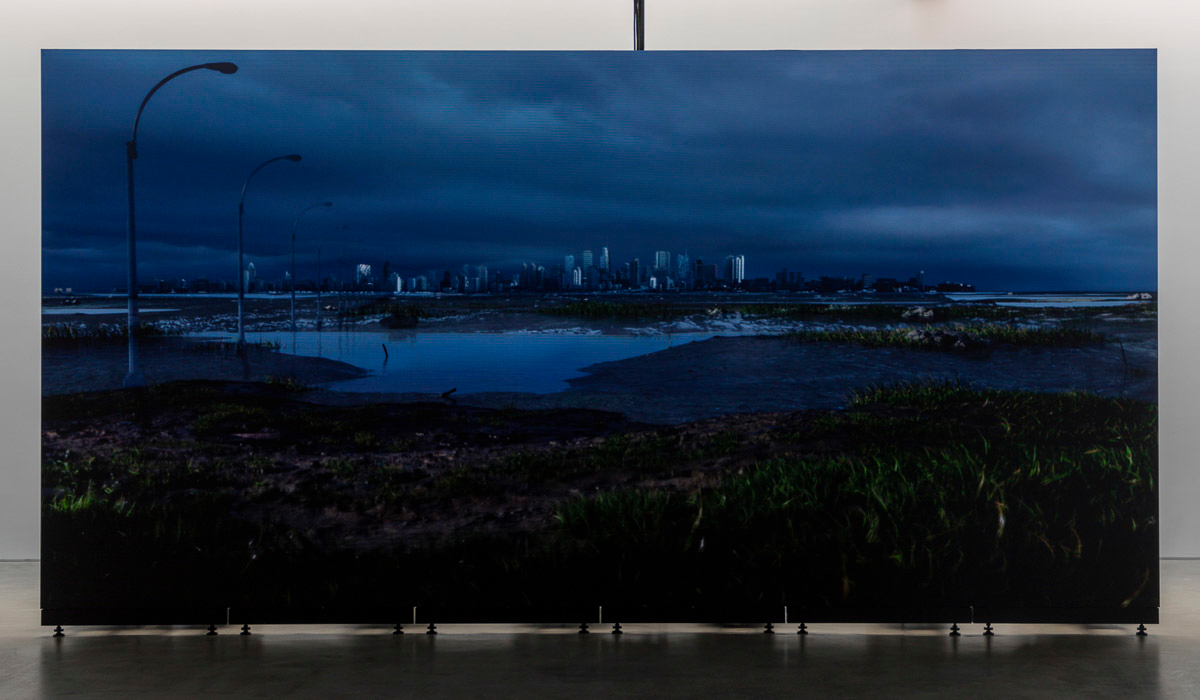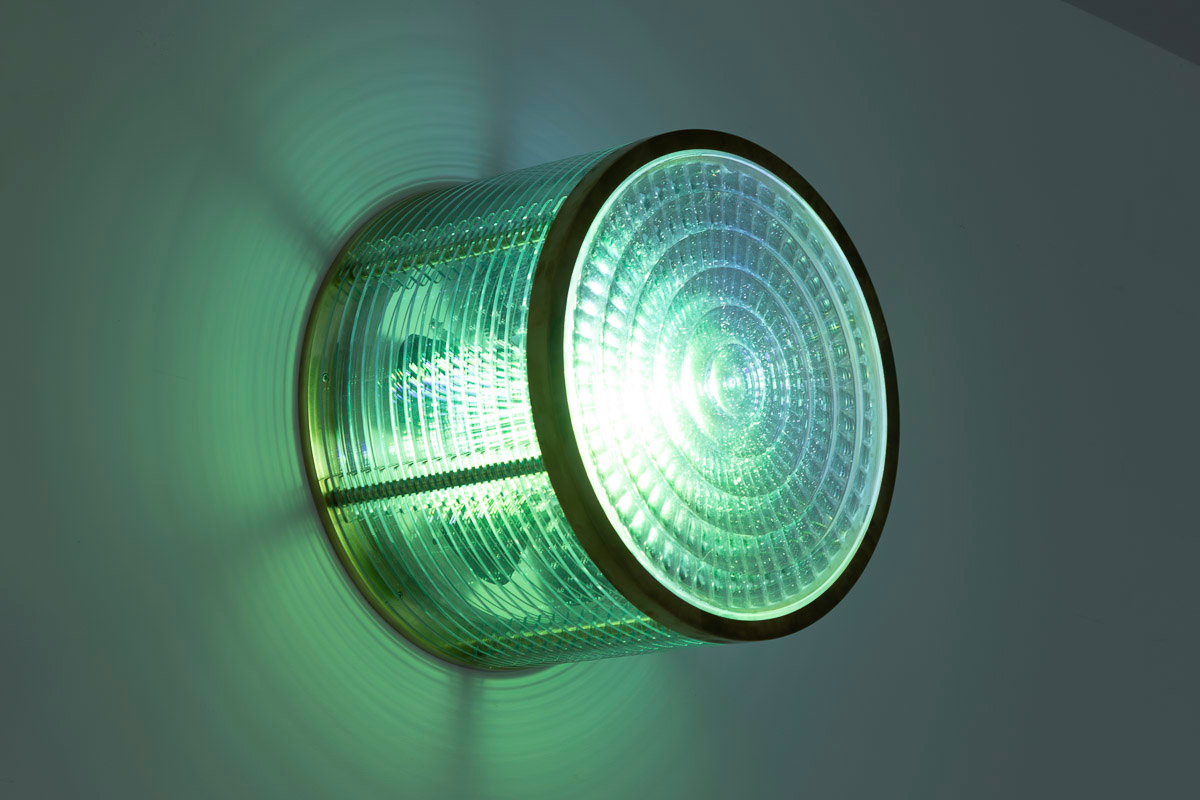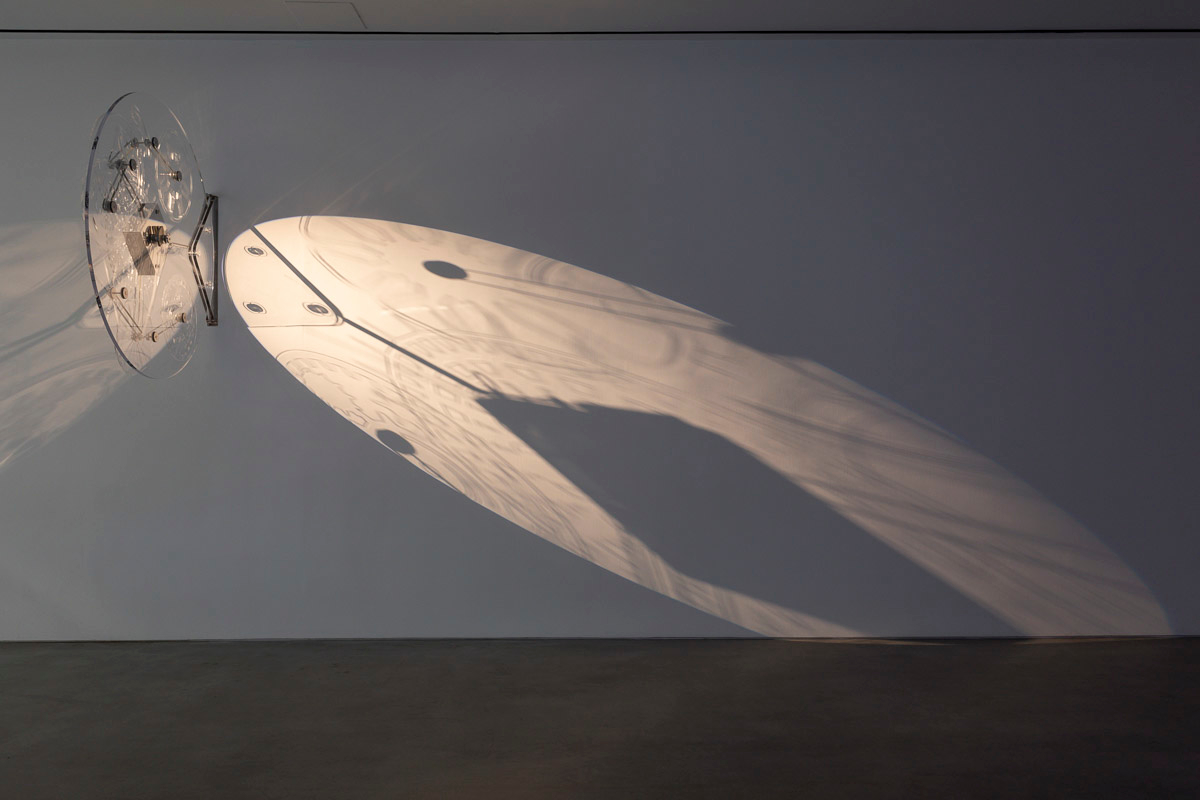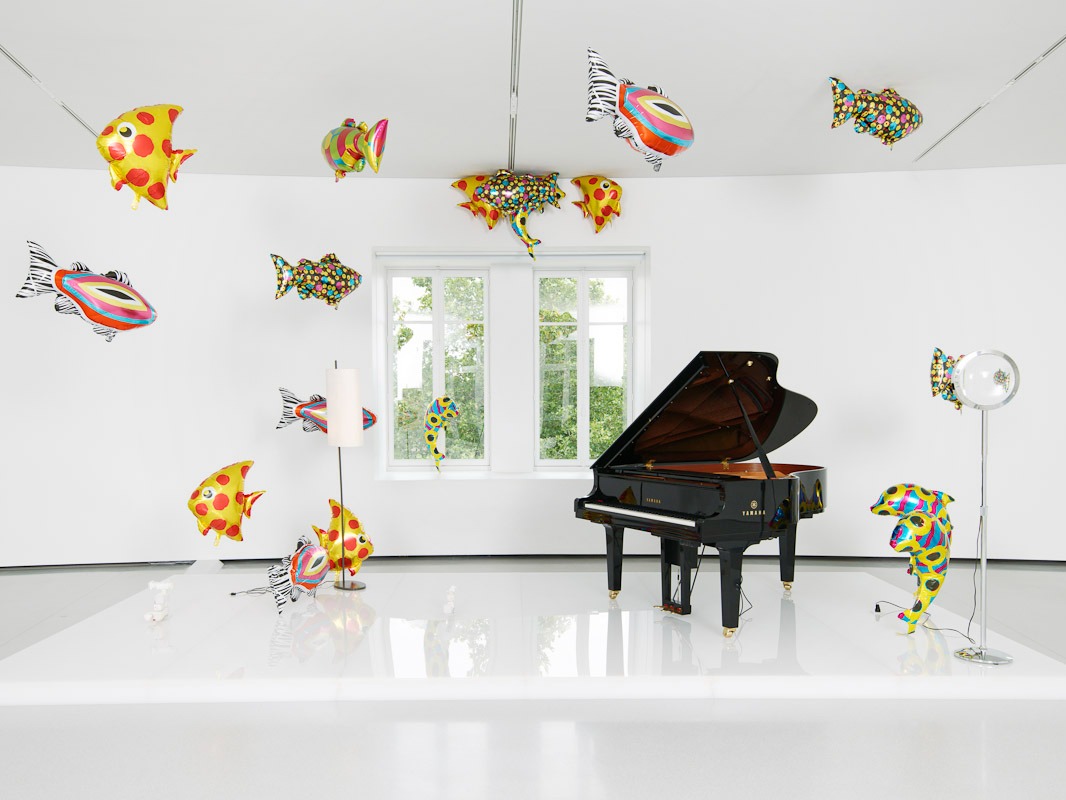Hertzian Tales
September 21 — October 28, 2023
New York: 24th Street
Philippe Parreno’s exhibitions are living organisms, responsive to their environments and the people within them. Think Robert Rauschenberg’s White Paintings (1951), famously described by John Cage as “airports for lights, shadows, and particles” as multi-dimensional entities powered by an AI. Parreno’s exhibition at Gladstone, Hertzian Tales is the most recent manifestation of his ongoing contemplation of art as both sentient and sensual. New and recent works perform an intricate choreography in reaction to multiple stimuli, some as ineffable as the slow melt of time or invisible shifts in barometric pressure, others as shocking and urgent as climate change. The transparent acrylic Clock (2020) with its multiple faces animated by gears controlled by a DMX box, adheres to the forward propulsion of passing minutes, yet stutters and shifts according to changes in the atmosphere. The video, The Owl in Daylight (2020-2023)—never before exhibited in the U.S.—comprises a CGI-animated waterscape in which light and vapor and a fugitive city appear and disappear algorithmically in concert with actual climactic fluctuations. Part weather station, part imaginary world, this digital work pays homage to the last, unfinished, eponymously titled novel by sci-fi author Philip K. Dick, situated on an alien planet that lacks sound and considers the cacophony of Earth as a kind of heaven. The video’s generative soundtrack was conceived by composer and sound engineer Nicolas Becker to blend naturalistic noises with abstract echoes of our tech-driven landscape. An additional layer of sound interacts with the video for its current manifestation in the gallery. The voice of actor Charlotte Gainsbourg (with whom Parreno is currently working on a film project) responds to the natural forces depicted on the screen, becoming one with the water, the wind, and the rain. The non-narrative voiceover is determined by a computer program that syncs sound with the mutable components of the video. Using the Markov model, which assumes that all future states depend only on the current state, the algorithm allows endless permutations. Parreno’s heliostat sculpture, which typically captures the movement of sunlight to then reflect it onto a stationary point, here follows the sound of Gainsbourg’s voice, sending a ray of solar energy onto the screen in response to it. Like the beam of a film projector in a cinema, this light alludes to an unfolding narrative. The heliostat, the voiceover, and the video are synchronized like a mechanical ballet, a multi-part automaton recounting a lyrical, esoteric story.
Hertzian Tales—an allusion to the flow of electromagnetic waves—operates as a self-regulating system, adhering to a predetermined sequence of operations. Yet, within its framework, the intricate interplay of elements births feedback loops, unexpected variables, and non-linear events—making outcomes elusive and unpredictable. At its core, the exhibition can be distilled into a formula of interdependencies: climactic fluctuations animate a film, which in turn modulates the soundtrack. This auditory landscape then influences a voice, ultimately guiding the movement of a heliostat.
Parreno’s presentation at Gladstone inaugurates a year of major exhibitions and projects, including solo presentations at the Leeum Museum, Seoul, and the Haus der Kunst, Munich, that will expand on the artist’s ongoing exploration of voice generation and systems for computerized sentience, which are being exhibited here for the first time.
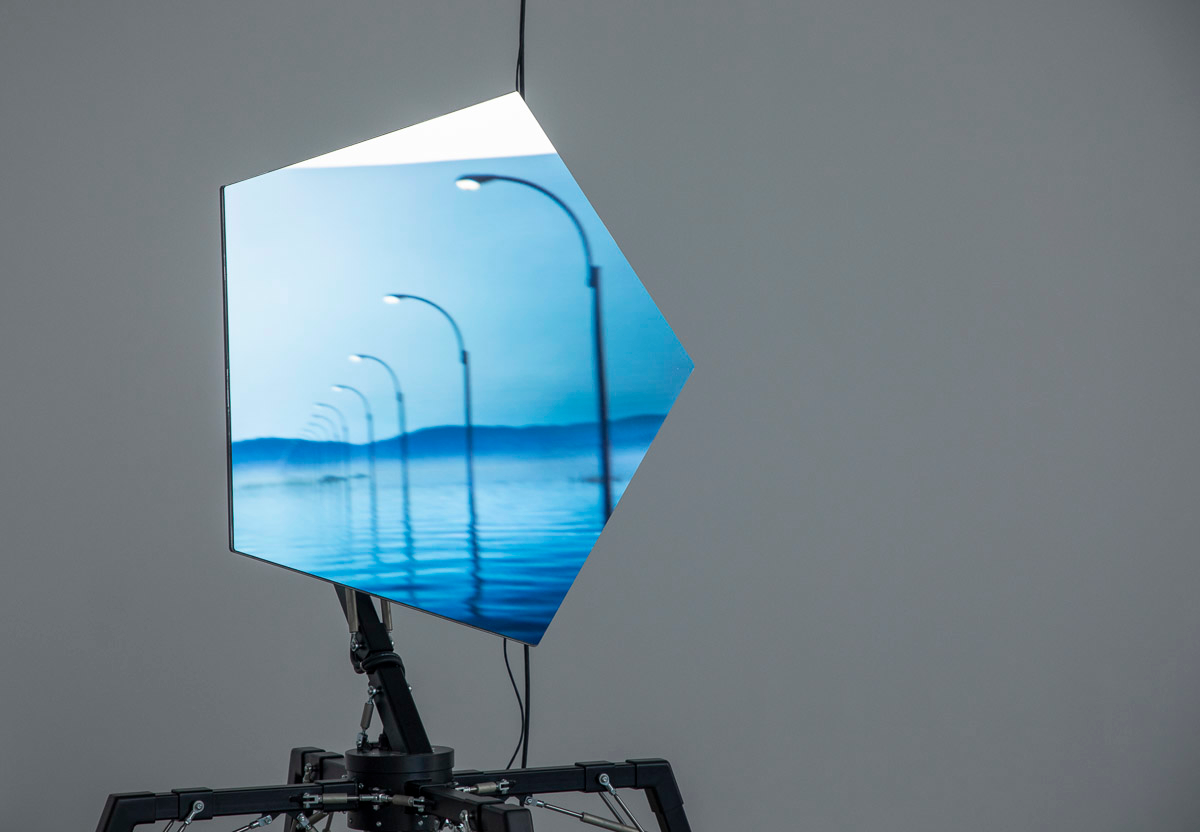
Installation
Work
About

Photo: Ola Rindal
A key artist of his generation, Philippe Parreno has radically redefined the exhibition experience by taking it as a medium and placing its construction at the heart of his process. Working in a diverse range of media including film, sculpture, drawing, and text, Parreno conceives his exhibitions as a scripted space where a series of events unfold. He seeks to transform the exhibition visit into a singular experience that plays with spatial and temporal boundaries and the sensory experience of the visitor. For the artist, the exhibition is less a total work of art than a necessary interdependence that offers an ongoing series of open possibilities. Based in Paris, France, Philippe Parreno has exhibited and published internationally. He studied at the Ecole des Beaux-Arts in Grenoble from 1983 until 1988 and at the Institut des Hautes Etudes en arts plastiques at the Palais de Tokyo, Paris from 1988 until 1989.
Parreno has presented solo exhibitions at Haus der Kunst, Munich, Germany (2024-2025); Leeum Museum of Art, Seoul, South Korea (2023); La Bourse de Commerce, Paris (2021); LUMA, Arles (2021); The Museum of Modern Art, New York (2019); Watari-Um, Tokyo (2019); Gropius Bau, Berlin (2018); Jumex, Mexico City (2017); The Rockbund Art Museum, Shanghai (2017); Serralves Museum of Contemporary Art, Porto (2017); ACMI, Melbourne (2016/17); HangarBicocca, Milan (2015/2016); Park Avenue Armory, New York (2015); Palais de Tokyo, Paris (2014/2013); CAC Malaga (2014); Garage Museum of Contemporary Art, Moscow (2013); Fondation Beyeler, Riehen/Basel (2012); Serpentine Gallery, London (2010-2011); Centre for Curatorial Studies, Bard College, New York (2009–10); Irish Museum of Modern Art, Dublin (2009–10); Kunsthalle Zürich (2009) and Centre Georges Pompidou, Paris (2009). Parreno’s work is represented in numerous major museum collections, including Tate, London; MoMA, New York; Centre Pompidou, Paris; Solomon R. Guggenheim Museum, New York; Kanazawa Museum of the 21st Century, Japan; Musée d’Art Modern de la Ville de Paris, Paris; SFMOMA, San Francisco; Walker Art Center, Minneapolis. His work was also presented at the Venice Biennale (1993, 1995, 2005, 2007, 2009, 2015, and 2017), Venice Biennale of Architecture (2014), Lyon Biennale (1997, 2003, and 2005), and Istanbul Biennial (2001).
More on Philippe Parreno
